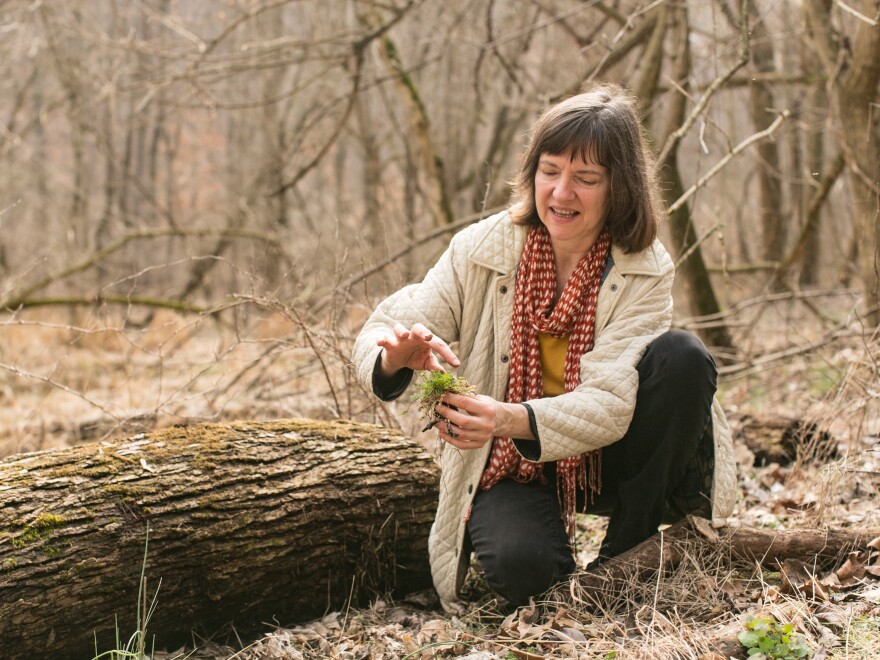People might not think of winter as a fruitful season for foraging wild edibles, but nutritionist and expert forager Debbie Naha says there's actually a lot out there that you can find year-round.
Naha first got into foraging during college, when a fellow student told her that you could eat the dandelions growing on the campus lawn. That sparked her interest in wild plants; she's been learning to identify and cook with them ever since.

"You learn a plant and you absolutely know what it is," Naha says. "It's like if someone handed you a peach and an orange, you'd say, 'Well, of course I know the difference.' And that's how sure you become."

Naha leads wild edible walks and programs in New Jersey and Pennsylvania. "I've always been interested in nutrition and what grows wild that is food for our species," she says. "I always felt like we knew what birds eat and what deer eat, but what's out there that's actually nourishing for us?"
Naha's favorite resource for foraging knowledge over the years has been Lee Allen Peterson's A Field Guide To Edible Wild Plants. "He always includes poisonous look-alikes and how to identify [them]," she says.
Naha gets so many requests from the people who take her walks about what to do with the wild plants they've identified and gathered that she is now working on a recipe book of her own. "I don't know what I'm going to call it yet — I'm thinking 'The Foraging Nutritionist,' " she says. "It's more or less common plants, how to positively identify them and how to prepare them, so a lot of recipes and what you do with the plant."
Naha guided us on a winter foraging walk at Climbers Run Nature Preserve in Pequea, Pa., then showed us how to prepare her recipe for pasta with the wild greens she found. Watch the video above to see how she made a tea from spicebush twigs and cooked with chickweed, hairy bittercress, field garlic and purple dead nettle.

Pasta With Early Wild Greens
Foraged greens for this dish can readily be found in spring, and often in late winter. Serves 6.
Ingredients:
Directions:
Place a large colander in the sink for draining the pasta. In the bottom of the colander place your chopped greens.
Cook the pasta according to package directions. Before draining, dip a measuring cup into the water and reserve about 1 cup of the hot water. Drain the pasta into the colander over the greens. Return all this to the empty pasta pot, stir in about half of your reserved hot water, and put the lid on.
In a skillet, heat the olive oil over medium heat. Add the garlic and the red pepper flakes, and sauté until garlic is just golden. Remove skillet from the heat.
Add this oil and garlic to the pasta and greens. Stir well. The bottom of the pot should have a little puddle of broth. If not, stir in a bit more reserved pasta water.
Transfer to a large serving bowl, and mix in the half cup of grated Parmesan.
Season with salt to taste.
Serve with extra grated cheese at the table.
*Wild greens: young dandelion greens, bittercress, garlic mustard, chickweed, field garlic greens, violet leaves, stinging nettles, etc. Note: When working with stinging nettles, chop them (wearing gloves!) and toss them into your boiling pasta water about midway through cooking the pasta. All it takes is a minute or two in the boiling water to deactivate the tiny stinging hairs — no more sting!
Recipe courtesy of Debbie Naha
Copyright 2021 NPR. To see more, visit https://www.npr.org.


